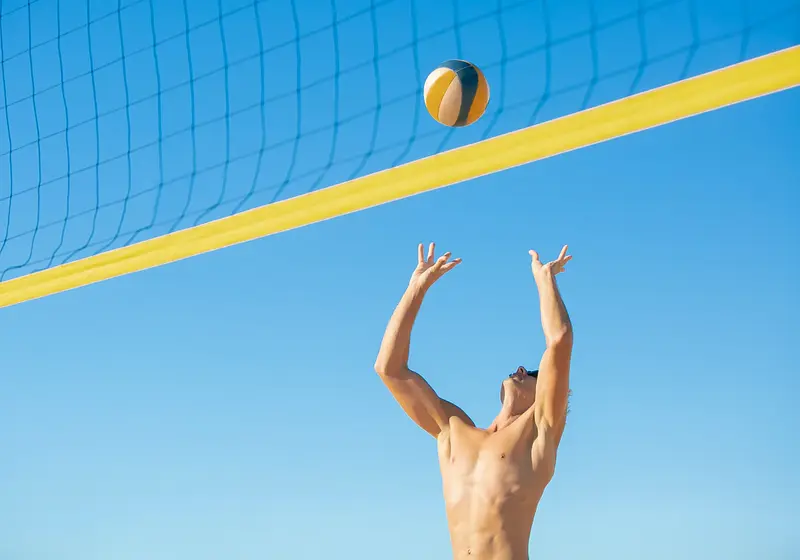150 minutes of cardiorespiratory activity. This is the recommended amount for youth exercise every week. Unfortunately, there is a wide range of people who don’t meet this basic standard.
Sports and physical activity is a great way to spend time, as it offers endless benefits to the mind and makes the body a lot more capable, which is important for general strength or cardiovascular health. Sports also teach life skills involving discipline, hard work, and teamwork, which translate to the workplace setting.
Across the nation, 8 million people participate annually in some form of high school sport. And with so many people straining themselves at practice and competitions to get better at their sport, we’re bound to see many people get injured. It’s especially important to highlight athletic injury for youth and high school considering that these youth athletes are at the most risk for major injury.
Why? Because their bodies are not fully developed and injuries may have extreme impacts without safety precautions. In order to help avoid the 1.25 million high school athlete injuries every year, it’s important to remember prevention, treatment, and recovery are all important methods of avoiding injuries.

Let us slide into your dms 🥰
Get notified of top trending articles like this one every week! (we won't spam you)About Injuries
When talking about the specific injuries in teenagers, there are four main types of injuries. They are sprains/strains, which are often minor and easier to recover from and can affect ligaments, muscles, and some tendons. Fractures and tears are often major damage to muscles and bones.
Concussions are also very common and can cause damage to different parts of the brain, especially if left untreated. Overuse injuries are often seen depending on the sport, and can lead to large amounts of fatigue.
Sprains and strains are perhaps the most common types of sports injuries among teenagers. These injuries often occur when ligaments, which connect bone to bone, or tendons, which attach muscles to bones, are stretched or torn. Sprains involve ligament damage, while strains involve tendon or muscle damage.
Common locations for sprains and strains include the ankle, wrist, knee, and back. They account for about 85 to 90 percent of high school injuries.
Fractures and tears are more intense and can sideline high schoolers for weeks to months. High-contact sports like basketball and football have an increased risk for this. In terms of treatment, it is often necessary to use a cast or other device to set the body part straight again.
Concussions are very serious in high-contact sports, especially if repeated, and cause 70 to 90 percent of deaths. For treatment, it’s best to immediately go to a health professional, but certain medications and painkillers are sometimes prescribed. Also, getting enough nutrition and sleep is key.
Lastly, overuse injuries are often related to sprains and strains, but usually occur when an action is repeated or training is repeated too extensively, which puts too much pressure on the muscle or joint. For example, runners often have to deal with lower body overuse injuries, whether that be knees, hips, shins, or feet depending on their training.

Take the Quiz: What Type of Notes Should I Take?
Discover the best note-taking method for your learning style!
What causes Them?
Interestingly, the fact that teens are still developing can also contribute to injury risk. Although adolescence is generally when you grow and increase muscle and bone strength, there are a few things to remember. Firstly, rapid growth spurts can affect coordination and balance, which is especially important for sports where coordination is key. This can lead to minor injuries and it generally takes time for your body to adapt to growth spurts.
Also, muscle and bone development is rarely perfectly even. A lot of the time, there will be a muscular imbalance or bone curve which can be fixed through proper training. In addition, the hormones naturally released by the body can affect muscle elasticity and how durable the tendons and ligaments are. Warmups and stretching are very important to avoid this.
How to Avoid Them
In general, all sports will incorporate five major components that need to be met when competing and training to get better. The first one is warming up, stretching, and cooling down. Activating the muscles properly can reduce minor cramping and injuries, as well as major injuries before a competition. Stretching is also key for moving your muscles through their full range of motion, which is important for most sports.
Next, there’s conditioning and strength training. Depending on the sport, this may look different, but some form of routine resistance training and some form of regular cardiovascular conditioning is necessary. Then, protective gear or equipment can mitigate lots of impact sports injuries or in general, make performance more efficient.
The last two components of adequate recovery and nutrition/hydration go together, since what anyone is doing outside of practice may seem less relevant, but is still important. Fatigue can lead to injuries, burnout, and reduced improvement in the long run. Additionally, water intake and key nutrients help build energy systems and muscles which you’ll need for your sport.

Treatment
Many times on the field/court, you might not have access to care such as an athletic trainer. In those cases, knowing first aid is important, with the RICE procedure. First, they should relax the area and lie down without putting pressure on that area.
Then, they should use ice or a cloth/towel to reduce pain and inflammation. Next, wrapping the area with some form of compression wrap or even a cloth helps control swelling and provide support. Lastly, elevating the injured area above the heart level can help it heal.
Additionally, a lot of people may not be aware of the cases where you should consult a doctor or go to the emergency room, compared to staying home and using basic home treatment. General soreness or very minor wounds, as well as minor strains and bruises which are better in a few days, are a common part of sports and don’t necessarily mean something needs to be fixed. However, any fractures or dislocations, deep wounds and cuts, injuries that affect the head, neck, and spine, and infection should be reported.
Although prevention is the best cure, and I outlined several strategies for prevention, the reality is that sometimes injuries do happen, and there is a need for recovery and rehab. First of all, it is important to spend time and plan everything out (of course, keeping some flexibility depending on how you’re feeling) for your plan. This plan should include some form of progressive therapy, where you start to work with the injured muscle/limb and progressively put more pressure on it through training.
In addition, you need to set recovery goals and expectations, where you have benchmarks to let you know what progress you’ve made. For example, don’t expect to run your PR for a 5k two weeks after you’ve been injured, maybe take some more time and then try to run 2 minutes slower than your PR. Of course, these numbers will change for everyone.
In conclusion, it is very important to be aware of injuries and their prevalence in high schoolers. They affect many athletes, from common and minor injuries, to some severe injuries which require medical attention. As always, the best cure is prevention, so there are a lot of things which you can do to avoid being in that position in the first place. As teens, most of us aren’t elite athletes and we shouldn’t be pushing to the risk of injury every workout or practice.
Disclaimer: This information serves an educational purpose. Consult a medical professional or healthcare provider if you’re seeking medical advice, diagnoses, or treatment.













